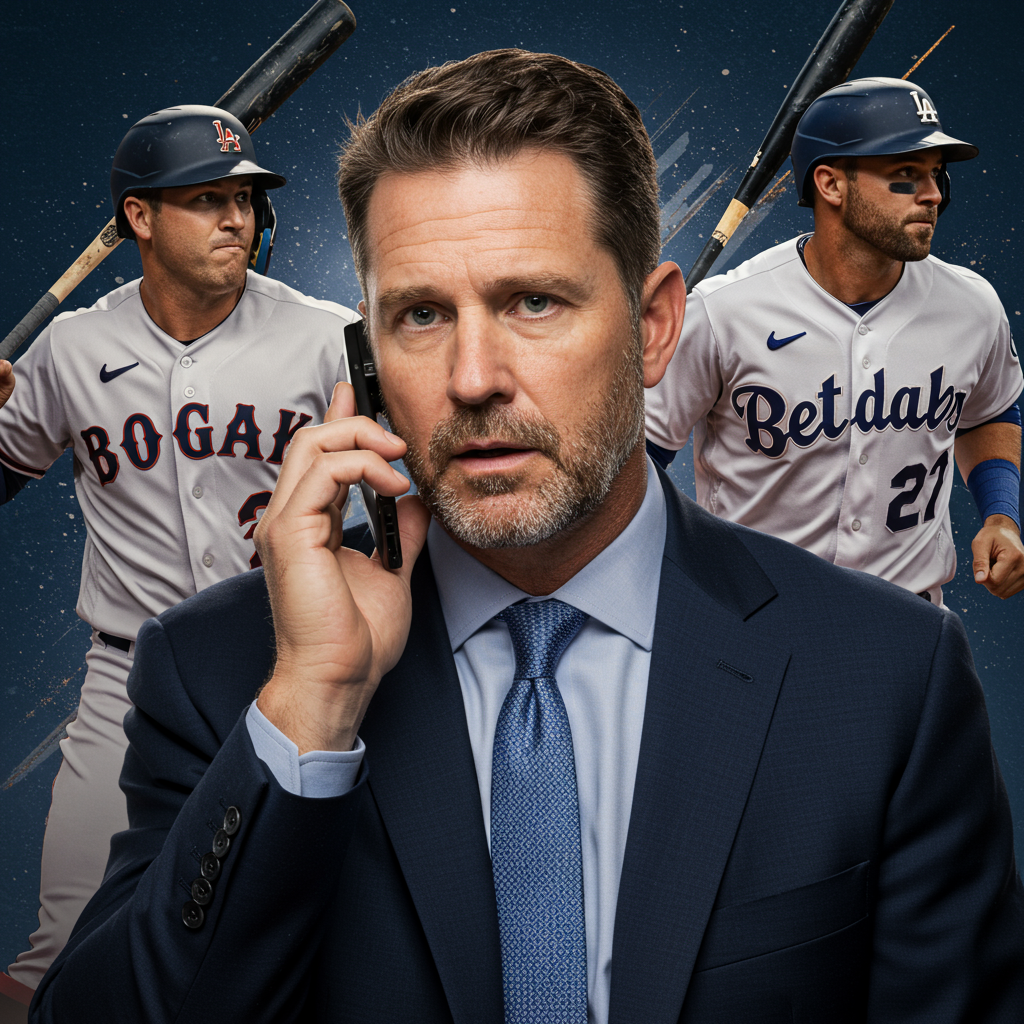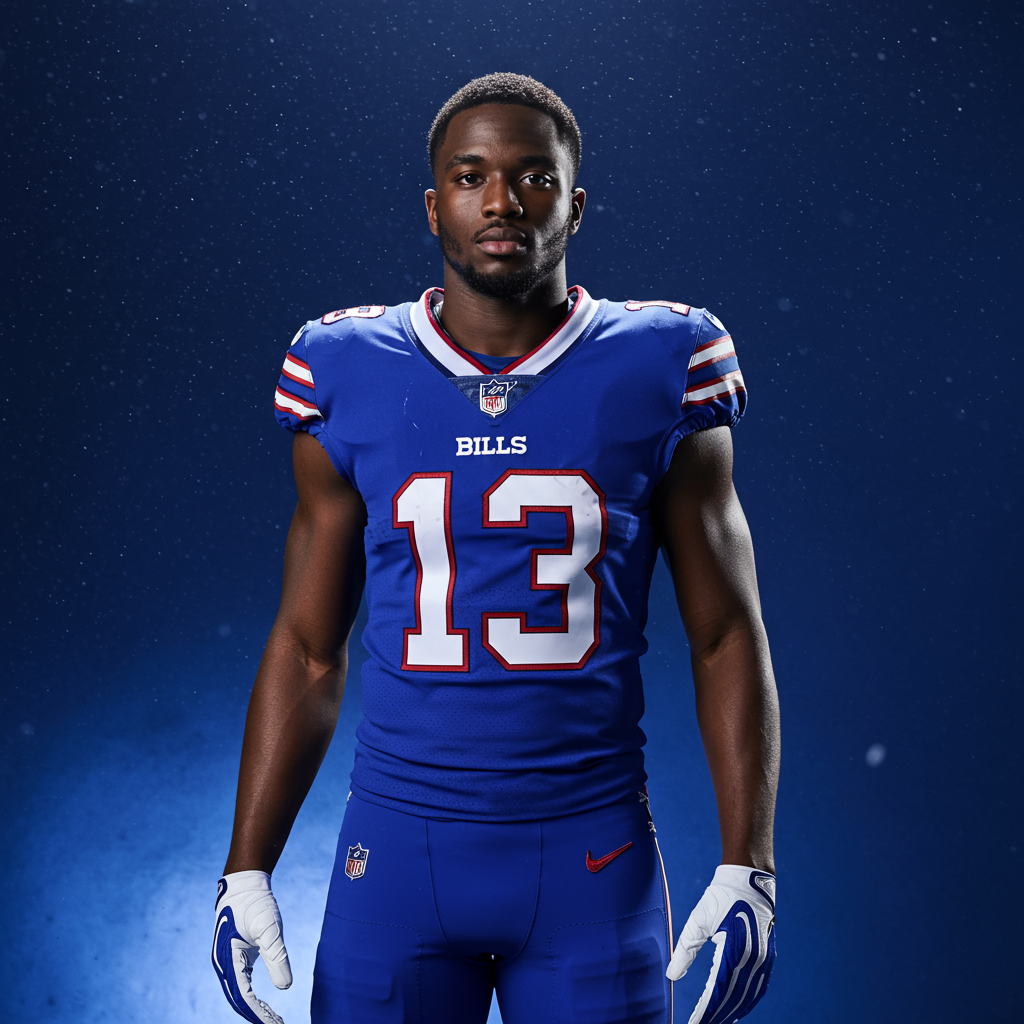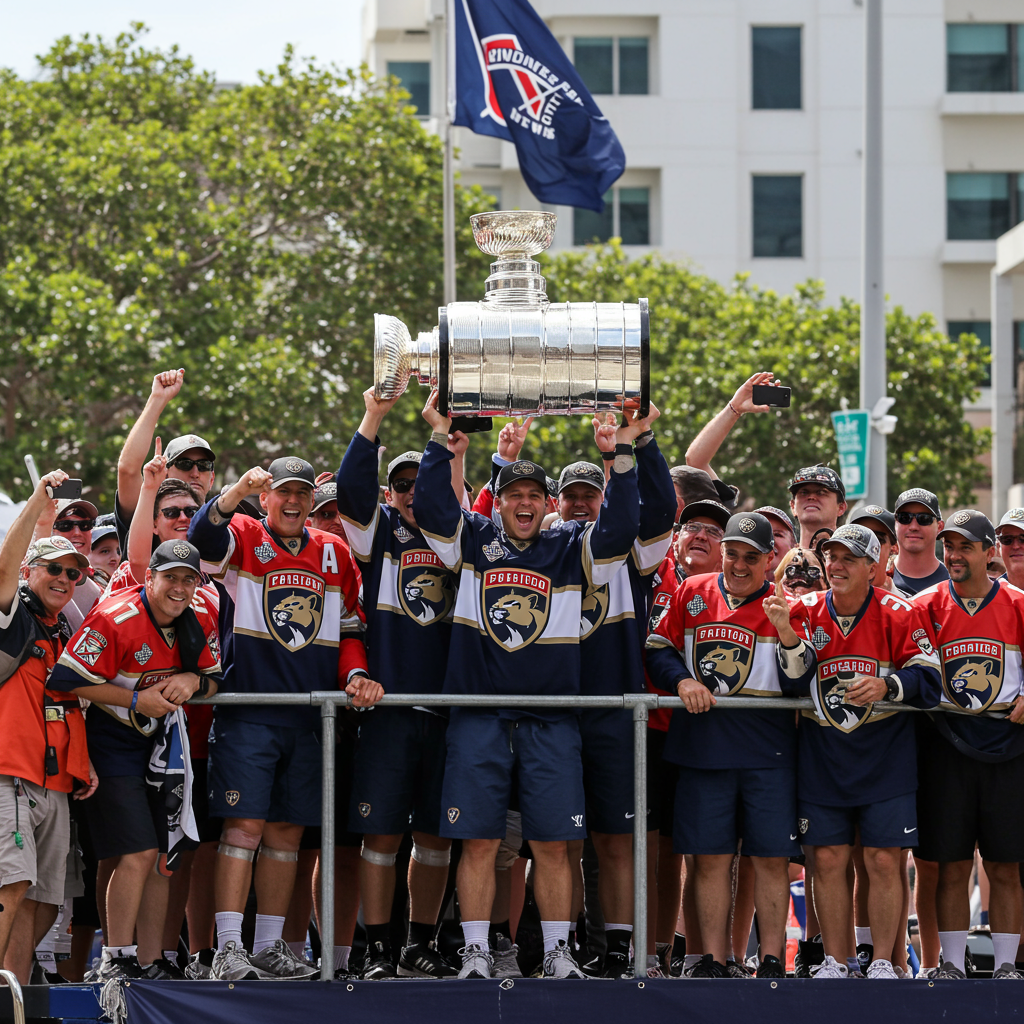The MLB Trade Deadline is here, a pivotal moment that reshapes the league landscape! General managers are working tirelessly, making strategic roster moves that could define a division race or secure a World Series path. Every deal, from a high-impact veteran to a promising prospect, carries immense implications for contending teams. This comprehensive guide dives into the top players most likely to be dealt, analyzing their fit and potential impact as the clock ticks down to 6 p.m. ET on July 31.
Understanding MLB Trade Dynamics
The modern baseball trade deadline is a complex dance of supply and demand. Teams evaluate their standings, future outlook, and financial flexibility to decide whether to buy, sell, or even do both. Contenders scour the market for “missing pieces” – a reliable bullpen arm, an extra power bat, or a veteran starting pitcher. Meanwhile, struggling clubs look to offload expiring contracts or high salaries in exchange for valuable prospects, bolstering their farm systems for future contention.
This year’s market has seen significant asking prices for top talent. Some teams are hesitant to declare themselves outright sellers. This can lead to a “flat landscape,” where fewer elite players move than anticipated. General managers must be creative, often engaging in complex “contender-to-contender” deals to fill specific needs without fully rebuilding. Key factors driving potential trades include a player’s contract status (expiring vs. multi-year control), recent performance, and their team’s playoff viability.
Why Some Stars Aren’t Moving
While the rumor mill churns, some prominent names are less likely to change teams. This is due to various strategic reasons, including long-term team control, recent performance boosts, or potential qualifying offers. For example, pitchers like Sandy Alcantara or Zac Gallen might remain, with their current teams either holding out for overwhelming offers or planning a qualifying offer. Young, controllable starters like Mitch Keller are rarely dealt at the deadline unless a massive haul of prospects is offered. Even unpredictable teams like the Padres might hold onto players like Dylan Cease or Robert Suarez. Other players like Jarren Duran, Brandon Lowe, Steven Kwan, MacKenzie Gore, Joe Ryan, Brent Rooker, or Edward Cabrera could still be surprising additions, but current circumstances make their moves less probable for now. Teams often prefer to retain valuable assets if they see a path to contention or if the trade value isn’t commensurate with their talent.
Top 10 Players Poised for Deadline Deals
As the 2025 MLB Trade Deadline approaches, these ten players are generating the most buzz. Their potential moves could significantly alter the playoff picture.
1. Merrill Kelly, RHP, Arizona Diamondbacks
Kelly is more than just an innings-eater; he’s a reliable starter. His 2.56 ERA over his last 10 starts is impressive. He’s consistently pitched deep into games, often six or seven innings. His stellar 2023 postseason work (2.25 ERA in four starts) makes him appealing to any contender. The Cubs need a starter alongside Matthew Boyd and Shota Imanaga. The Astros also seek a third strong starter behind Framber Valdez and Hunter Brown. Even the Tigers, who acquired Chris Paddack, might need another arm with Reese Olson injured. The Diamondbacks are an “interesting team to monitor,” potentially becoming sellers if they prioritize future assets.
2. Ryan O’Hearn, 1B/OF, Baltimore Orioles
O’Hearn offers valuable versatility, playing first base or corner outfield. While mostly used in a platoon role, he started the season hot, hitting .333 with a .961 OPS through May. Though his numbers have dipped since, his left-handed bat is still coveted. The Rangers desperately need DH production, holding the worst OPS from that spot in MLB. The Astros actively seek a left-handed hitter. The Brewers have emerged as a late-game destination. He presents a low-risk, high-reward option for teams needing offensive reinforcement.
3. David Bednar/Dennis Santana, RHPs, Pittsburgh Pirates
The Pirates are expected to be busy sellers. Bednar is having a superb bounce-back season, posting career-best strikeout and walk rates. He’s also under team control through 2026, making him highly valuable. Santana, also controlled through 2026, boasts a minuscule 1.36 ERA. While his strikeout rate is below average, his low BABIP could regress. High-leverage relief is always in demand. The Tigers’ bullpen has struggled, and the Rangers need high-leverage arms. The Blue Jays seek another reliever, and the Dodgers might upgrade their closer situation.
4. Griffin Jax, RHP, Minnesota Twins
After trading Jhoan Duran, the Twins might hesitate to move another top reliever. However, Jax owns the fifth-highest strikeout rate in MLB among pitchers with over 40 innings. Like Duran, he’s controllable for two additional seasons, significantly boosting his value. If the Twins receive a similar package to what Duran fetched, it would be hard to decline. Contenders like the Dodgers, Yankees, Rangers, Tigers, and Blue Jays are all in need of bullpen help, making Jax a prime target.
5. Marcell Ozuna, DH, Atlanta Braves
Ozuna’s trade value is diminished due to struggling for two months after a hot start (.426 OBP, .883 OPS through May). He’s a pure DH, and rookie Drake Baldwin has cut into his at-bats. However, the Braves have little reason to keep him. The Rangers and Padres, both with the worst DH production in the majors, could take a chance on his power potential. Ozuna recently homered in consecutive games, suggesting a hot streak could be on the horizon for a team willing to gamble. The Braves are likely sellers for expiring contracts.
6. Charlie Morton, RHP, Baltimore Orioles
At 41, Morton had a rough start to the season with a 10.36 ERA in his first six outings. But a bullpen stint helped him rediscover his curveball. Since rejoining the rotation in late May, he’s 7-1 with a 3.66 ERA. Though his peripheral stats aren’t elite, he’s given up three or fewer runs in 10 of 12 starts. His extensive playoff experience is a major asset for contenders. Teams like the Blue Jays, Cubs, Astros, Tigers, Red Sox, Padres, and Mets could use a veteran arm. The Orioles are reluctantly sellers, focusing on expiring contracts.
7. Cedric Mullins, CF, Baltimore Orioles
Mullins is another impending free agent for the Orioles, who are focused on moving expiring contracts. His defensive metrics are a point of debate: Statcast shows 77th percentile in outs above average, but defensive runs saved rank him as the worst center fielder (minus-17 DRS). Teams needing a center fielder, such as the Phillies and Mets, must weigh these numbers. The Astros and Padres could also use his speed. He might fit better in left field or as a bench/DH option due to his arm strength.
8. Adrian Houser, RHP, Chicago White Sox
Houser is one of 2025’s intriguing pitching surprises. He started the season with a 5.03 ERA in Triple-A for the Rangers but found new life with the White Sox, posting a 2.10 ERA in 11 starts, including nine quality starts. This breakout performance, attributed to increased velocity and a more effective curveball, makes him a candidate for any contender. He could serve as a valuable playoff rotation piece or a multi-inning reliever. The White Sox are clear sellers, making him highly available.
9. Mike Tauchman, OF, Chicago White Sox
While Luis Robert Jr. is the bigger name from the White Sox outfield, Tauchman is arguably more likely to be traded due to a lower acquisition cost. His OPS is nearly 200 points higher than Robert’s. He’s not a true center fielder, but could play left field for teams like the Phillies (over Max Kepler) or be a nice DH option for the Padres or Rangers. Other potential suitors include the Astros, Reds, and Blue Jays. The White Sox are shedding veteran talent.
10. Ramon Laureano, OF, Baltimore Orioles
Laureano has put up excellent numbers (.290/.355/.529) and has a reasonable $6.5 million club option for 2026. This combination makes him highly desirable. He offers a right-handed bat, appealing to teams like the Mariners who need right-handed offense. He could also fill left field for teams like the Phillies (struggling Max Kepler) or Dodgers (Michael Conforto). The Rangers could utilize him as a DH. The Orioles, while reluctant sellers, are keen to move expiring contracts, though Laureano’s option makes his return possible.
Navigating the Buyer’s and Seller’s Market
This trade deadline is distinct due to the number of teams still “in it.” This leads to fewer clear sellers, driving up prices for available assets.
Buyers: Many teams are aggressive. The Tigers seek a closer and another bat. The Cubs prioritize a starting pitcher, a third baseman, and bullpen depth. The Dodgers need bullpen help and a utility player. The Blue Jays are “all-in” for two to three significant trades, targeting a starter and a reliever. The Astros are after a left-handed bat or a starting pitcher. The Phillies want to boost their outfield and bullpen. The Mets need a high-leverage reliever and possibly a center fielder. The Yankees seek pitching and a third base upgrade. The Red Sox look for a starter and first baseman. The Padres intend to add a bat or two. The Mariners are one impact bat away from being World Series contenders. The Reds need an outfield bat and bullpen help. The Giants are looking for more offense at first base or right field.
Buyers or Sellers: Some teams remain flexible. The Rays could buy or sell, potentially moving players with 2026 options in “contender-to-contender” swaps. The Cardinals might buy a starter without sacrificing key prospects, or sell high-value relievers. The Rangers should buy given their pitching, needing offense and a reliever. The Diamondbacks are the “most interesting team,” potentially selling key impending free agents to build for the future. The Angels could add pitching or become sellers. The Guardians aim to rebuild offense, possibly trading closers. The Twins might deal high-value relievers for an overwhelming offer. The Royals want to improve outfield offense but might sell pitchers.
Sellers: These teams are focused on the future. The Marlins will listen but won’t discount Sandy Alcantara or Edward Cabrera. The Orioles are reluctantly selling expiring contracts and listening on Félix Bautista. The Braves are likely dealing Marcell Ozuna and Raisel Iglesias. The Athletics expect smaller deals. The Nationals are making pitchers and a DH available. The Pirates are expected to be busy, with several key pitchers on the block to rebuild their offense. The White Sox have Luis Robert Jr. available again, despite a down year, as well as veteran starters and relievers. The Rockies are finally ready to make moves, with a starter and third baseman as key candidates.
The deadline often reveals the strategic vision of each front office. Deals involving players with multiple years of team control tend to fetch higher returns, while contenders fill immediate needs with rental players.
Frequently Asked Questions
What drives the high asking prices for players at the MLB Trade Deadline?
High asking prices at the MLB Trade Deadline are driven by a “flat landscape” across the league. Many teams remain “theoretically in it” for playoff contention, reducing the number of clear sellers. This scarcity of available talent allows selling teams to demand significant returns, often multiple high-value prospects, for their assets. As a result, only 19 of the top 50 players on some trade boards moved in a recent deadline, with only two from the top 10.
Which types of players are most sought after by contending teams at the deadline?
Contending teams typically prioritize specific needs: high-leverage relief pitchers, impact bats (especially left-handed), and reliable starting pitchers who can deepen a playoff rotation. Players with multi-year team control are highly coveted as they offer long-term value beyond the current season. Veteran players with playoff experience, even rental players on expiring contracts, are also attractive for teams looking for an immediate boost without sacrificing too many long-term assets.
How do contract situations influence a player’s likelihood of being traded?
A player’s contract status heavily influences trade likelihood. Players on expiring contracts are prime trade candidates for selling teams, as they can recoup value before the player leaves for free agency. Conversely, players with multiple years of team control (like Bednar or Jax) are extremely valuable and command a higher prospect return. Their current teams often weigh future contention hopes against a “massive trade haul.” High salaries can also be a barrier, sometimes requiring the selling team to absorb part of the salary or for the acquiring team to negotiate an extension.
Conclusion
The 2025 MLB Trade Deadline promises to be a whirlwind of activity, marked by strategic maneuvers and high stakes. From veteran innings-eaters to versatile sluggers and high-leverage relievers, the movement of these crucial players will dictate the trajectory of several contending teams. As general managers finalize their plans, the outcomes of these deals will not only shape the current season’s playoff races but also lay the groundwork for future success, underscoring the dynamic and high-pressure nature of baseball’s most exciting deadline.



